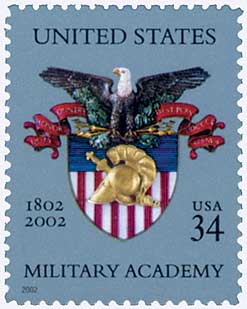
# 59710A - 2002 West Point Coin First Day Cover
First Day Coin Cover Commemorates West Point
Document West Point’s 200th anniversary with this limited-edition Fleetwood First Day Coin Cover. Includes an uncirculated 2002 U.S. Silver Dollar commemorative coin picturing the Academy Color Guard in parade. Produced at the West Point Mint, the coins picture the academy’s Bicentennial logo on the reverse. Cover also features the 2002 commemorative stamp honoring West Point, which was cancelled on March 16 to mark the coin’s release and the academy’s 200th anniversary.
Founding Of West PointÂ
Poised above the Hudson River, 50 miles north of New York City, West Point was first established as Fort Arnold, in 1778. The site was selected because of the unusual S-curve in the Hudson River below. Military engineer Tadeusz Kościuszko organized the fort’s defenses.
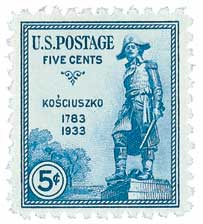
The fort was a key defense design to prevent British warships from sailing up the Hudson River and into New York’s interior. General George Washington considered West Point to be the most strategic location in America. Fortifications built there served as Washington’s headquarters in the summer and fall of 1779.
The fort was originally named after its first commander – Benedict Arnold. When Arnold switched his allegiance to the British, he offered to turn West Point over to the enemy. The capture of his British contact, Major John Andre, prevented the completion of the treachery, but Arnold fled to safety with the British Army. After his act of treason, the fort was renamed Fort Clinton, after General James Clinton.
In 1781, a “Corps of Invalids†was sent by Continental Congress to West Point to “give service to disabled officers†so that they could share “military knowledge to young gentlemen.†Few officers participated and the corps was disbanded two years later.
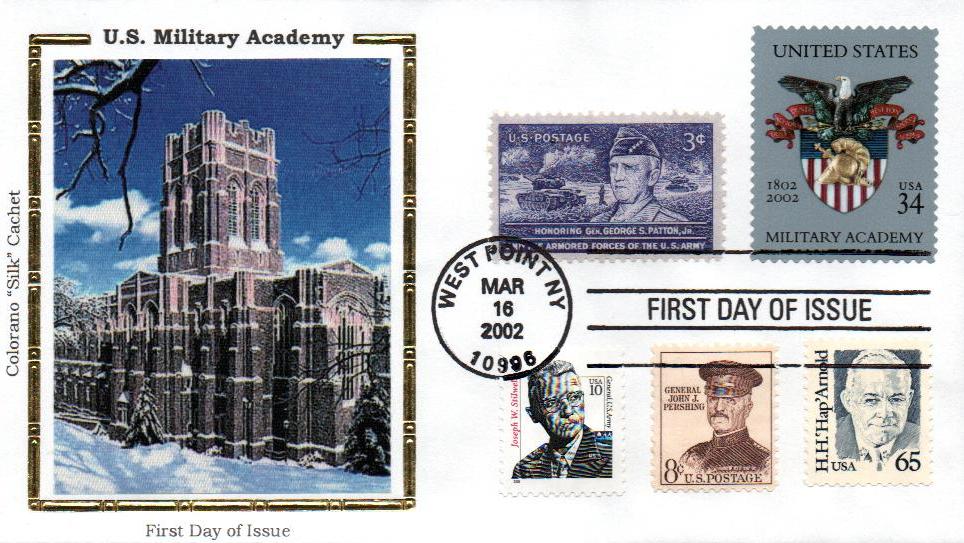
After the war ended, West Point was the largest post in the army. President George Washington came to believe that there should be a national military academy, but his Secretary of State Thomas Jefferson said he shouldn’t create one because there wasn’t a provision for it in the Constitution. Though many in Congress agreed with Jefferson, in 1794, they authorized the creation of a “Corps of Artillerist and Engineers†at West Point. However, they wouldn’t receive an official course of study for several years.
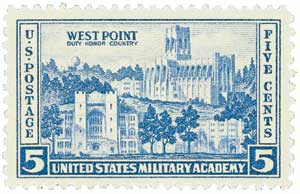
In the coming years, conflicts such as the Quasi-War with France and the Battle of the Wabash led Congress to believe there should be a formal military school at West Point. In 1801, they authorized President John Adams to take steps to improve the situation at West Point, but he took no action. By that time, there were just 12 cadets and one instructor there.
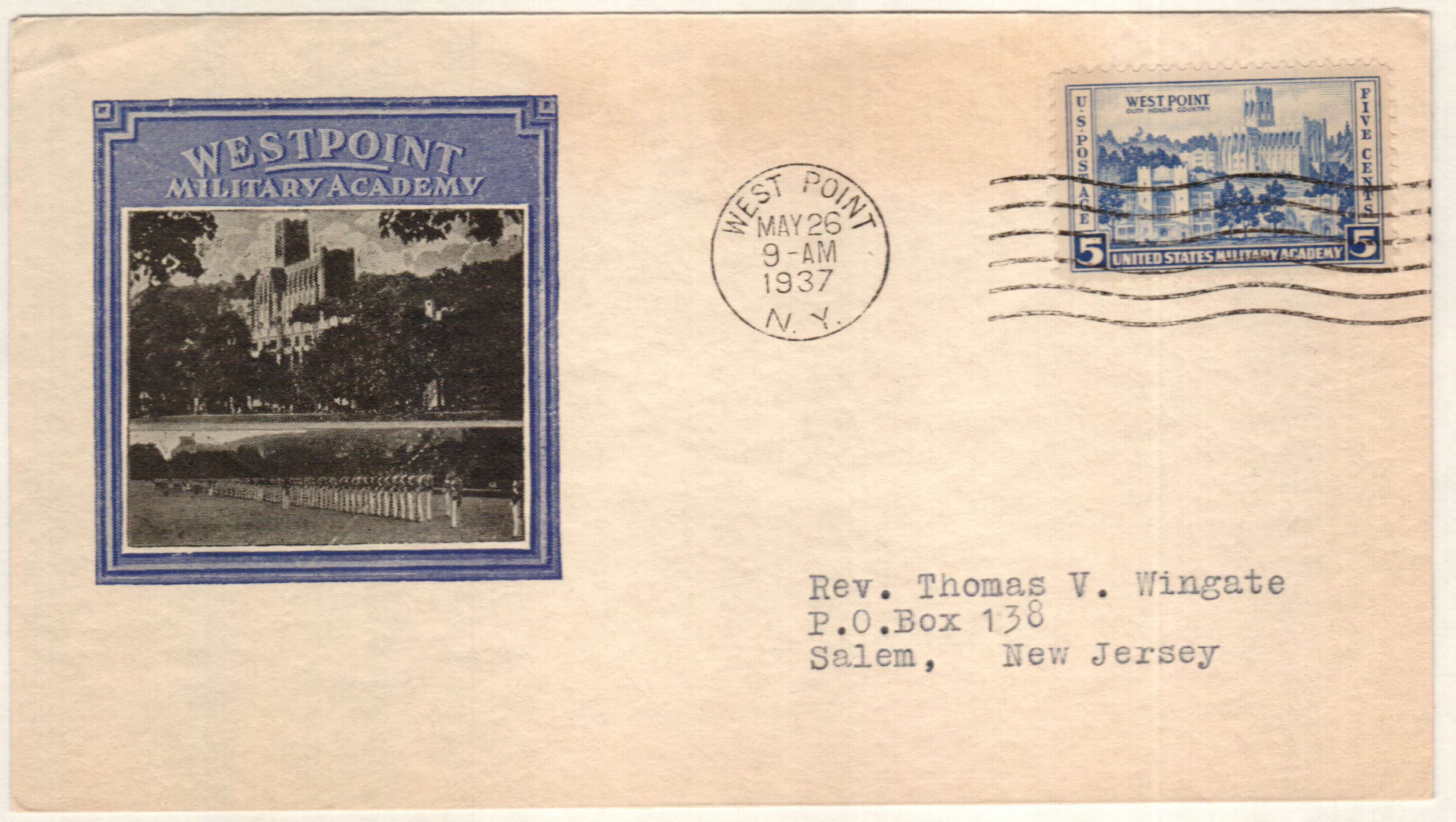
Once Thomas Jefferson assumed the presidency, his feelings on the idea of national military academy changed. Shortly after taking office, he called for legislation establishing a Corps of Engineers “which shall be stationed at West Point and constitute a Military Academy.†Congress created and approved the Military Peace Establishment Act and Jefferson signed it into law on March 16, 1802.
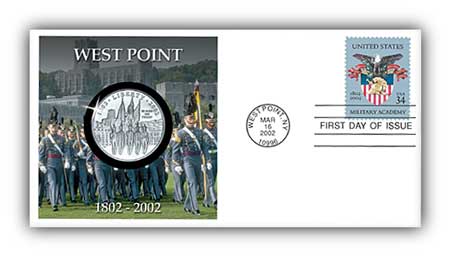
For the academy’s first superintendent, Jefferson picked Jonathan Williams, a scientist with no military background. The first classes were held on July 4, 1802, and the first person to graduate was Joseph Gardner Swift that October. The school had few standards for admission or length of programs. Cadets we admitted between the ages of 10 and 37 and could attend for as little as six months to as long as six years.
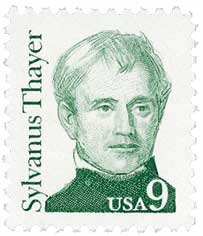
With the outbreak of the War of 1812, Congress pushed for a more formal system and increased the number of students to 250. One of the most influential people in the academy’s history was Sylvanus Thayer, who served as superintendent from 1817-1833. During that time he emphasized high academic standards, military discipline, and honorable conduct. For his contributions, he’s known as the Father of the Military Academy. A century later, another graduate and then-superintendent Douglas MacArthur expanded the curriculum, set the goal of “every cadet an athlete,†and formalized the commitment to the Cadet Honor Code, “A cadet will not lie, cheat or steal, or tolerate those who do.â€
Many West Pointers have left their mark on American history. They include Ulysses S. Grant, Robert E. Lee, George S. Patton, Jr., Dwight D. Eisenhower, John J. Pershing, Edwin E. “Buzz†Aldrin, and H. Norman Schwarzkopf.
Â
Learn more on West Point’s official website.
First Day Coin Cover Commemorates West Point
Document West Point’s 200th anniversary with this limited-edition Fleetwood First Day Coin Cover. Includes an uncirculated 2002 U.S. Silver Dollar commemorative coin picturing the Academy Color Guard in parade. Produced at the West Point Mint, the coins picture the academy’s Bicentennial logo on the reverse. Cover also features the 2002 commemorative stamp honoring West Point, which was cancelled on March 16 to mark the coin’s release and the academy’s 200th anniversary.
Founding Of West PointÂ
Poised above the Hudson River, 50 miles north of New York City, West Point was first established as Fort Arnold, in 1778. The site was selected because of the unusual S-curve in the Hudson River below. Military engineer Tadeusz Kościuszko organized the fort’s defenses.

The fort was a key defense design to prevent British warships from sailing up the Hudson River and into New York’s interior. General George Washington considered West Point to be the most strategic location in America. Fortifications built there served as Washington’s headquarters in the summer and fall of 1779.
The fort was originally named after its first commander – Benedict Arnold. When Arnold switched his allegiance to the British, he offered to turn West Point over to the enemy. The capture of his British contact, Major John Andre, prevented the completion of the treachery, but Arnold fled to safety with the British Army. After his act of treason, the fort was renamed Fort Clinton, after General James Clinton.
In 1781, a “Corps of Invalids†was sent by Continental Congress to West Point to “give service to disabled officers†so that they could share “military knowledge to young gentlemen.†Few officers participated and the corps was disbanded two years later.

After the war ended, West Point was the largest post in the army. President George Washington came to believe that there should be a national military academy, but his Secretary of State Thomas Jefferson said he shouldn’t create one because there wasn’t a provision for it in the Constitution. Though many in Congress agreed with Jefferson, in 1794, they authorized the creation of a “Corps of Artillerist and Engineers†at West Point. However, they wouldn’t receive an official course of study for several years.

In the coming years, conflicts such as the Quasi-War with France and the Battle of the Wabash led Congress to believe there should be a formal military school at West Point. In 1801, they authorized President John Adams to take steps to improve the situation at West Point, but he took no action. By that time, there were just 12 cadets and one instructor there.

Once Thomas Jefferson assumed the presidency, his feelings on the idea of national military academy changed. Shortly after taking office, he called for legislation establishing a Corps of Engineers “which shall be stationed at West Point and constitute a Military Academy.†Congress created and approved the Military Peace Establishment Act and Jefferson signed it into law on March 16, 1802.

For the academy’s first superintendent, Jefferson picked Jonathan Williams, a scientist with no military background. The first classes were held on July 4, 1802, and the first person to graduate was Joseph Gardner Swift that October. The school had few standards for admission or length of programs. Cadets we admitted between the ages of 10 and 37 and could attend for as little as six months to as long as six years.

With the outbreak of the War of 1812, Congress pushed for a more formal system and increased the number of students to 250. One of the most influential people in the academy’s history was Sylvanus Thayer, who served as superintendent from 1817-1833. During that time he emphasized high academic standards, military discipline, and honorable conduct. For his contributions, he’s known as the Father of the Military Academy. A century later, another graduate and then-superintendent Douglas MacArthur expanded the curriculum, set the goal of “every cadet an athlete,†and formalized the commitment to the Cadet Honor Code, “A cadet will not lie, cheat or steal, or tolerate those who do.â€
Many West Pointers have left their mark on American history. They include Ulysses S. Grant, Robert E. Lee, George S. Patton, Jr., Dwight D. Eisenhower, John J. Pershing, Edwin E. “Buzz†Aldrin, and H. Norman Schwarzkopf.
Â
Learn more on West Point’s official website.




